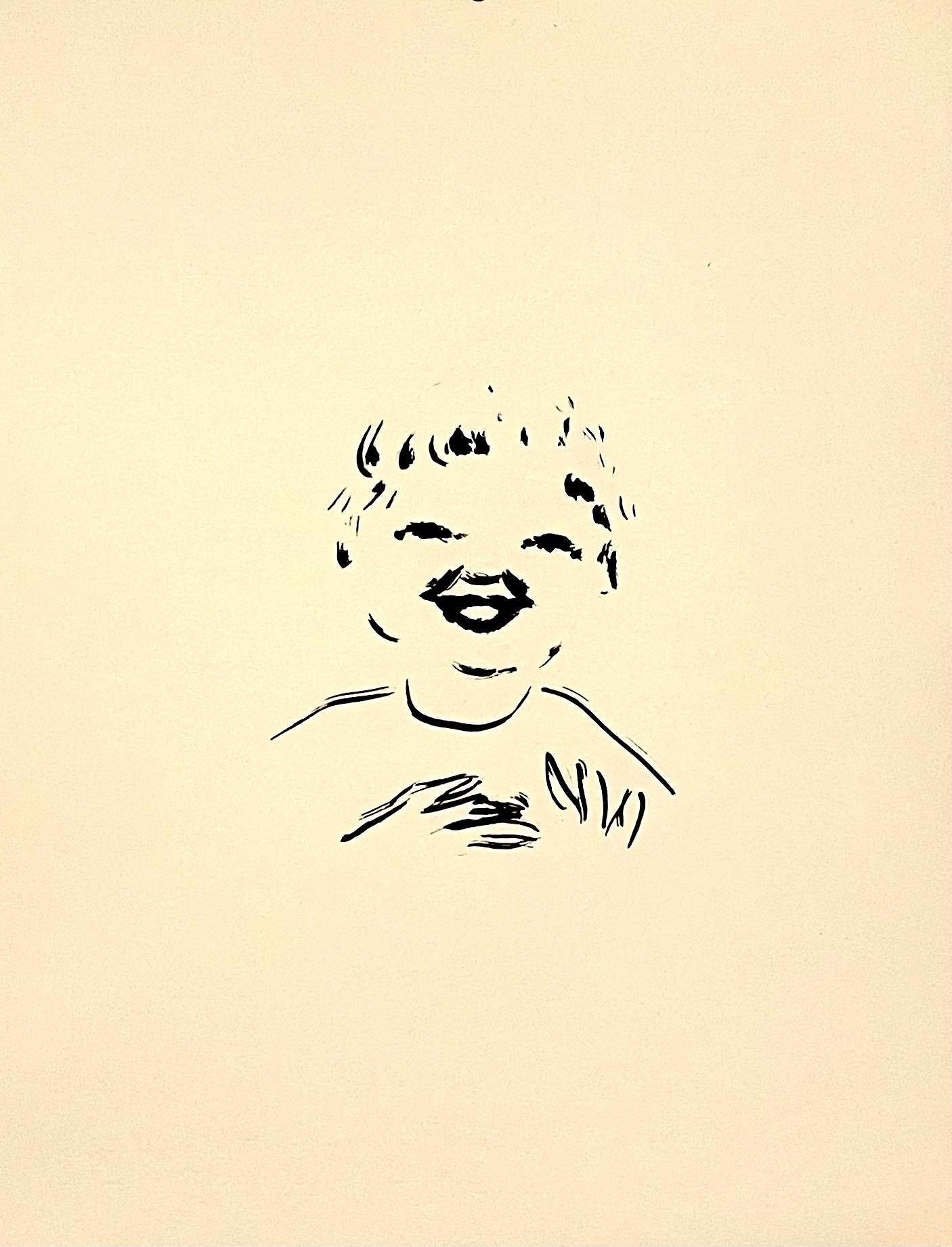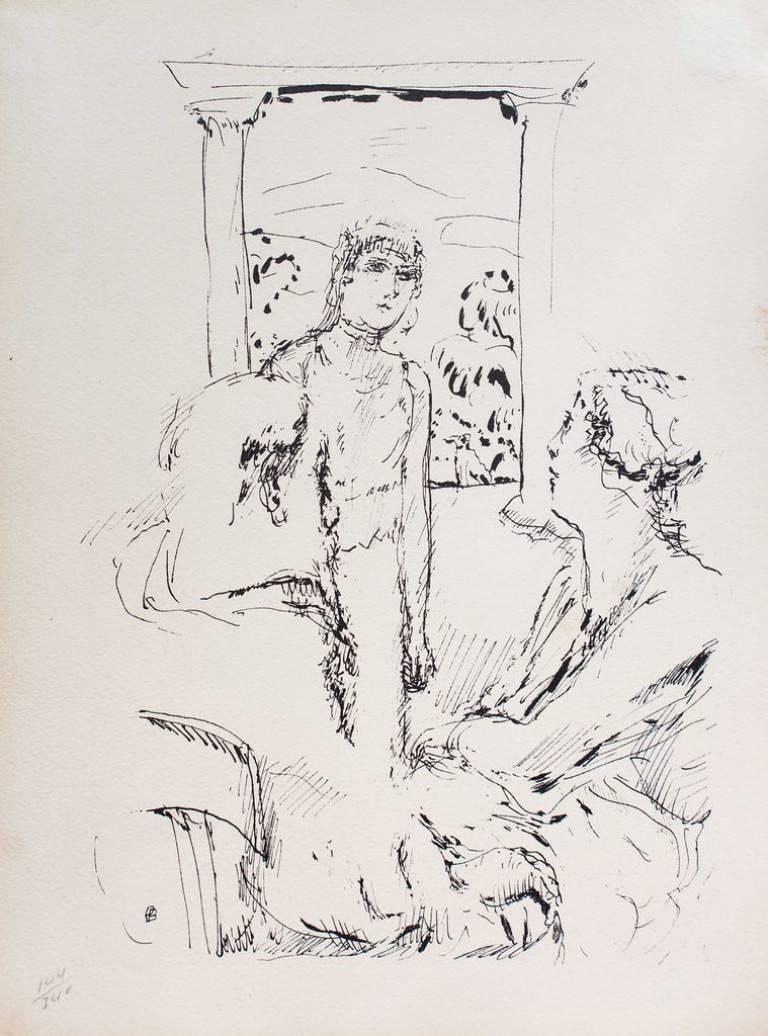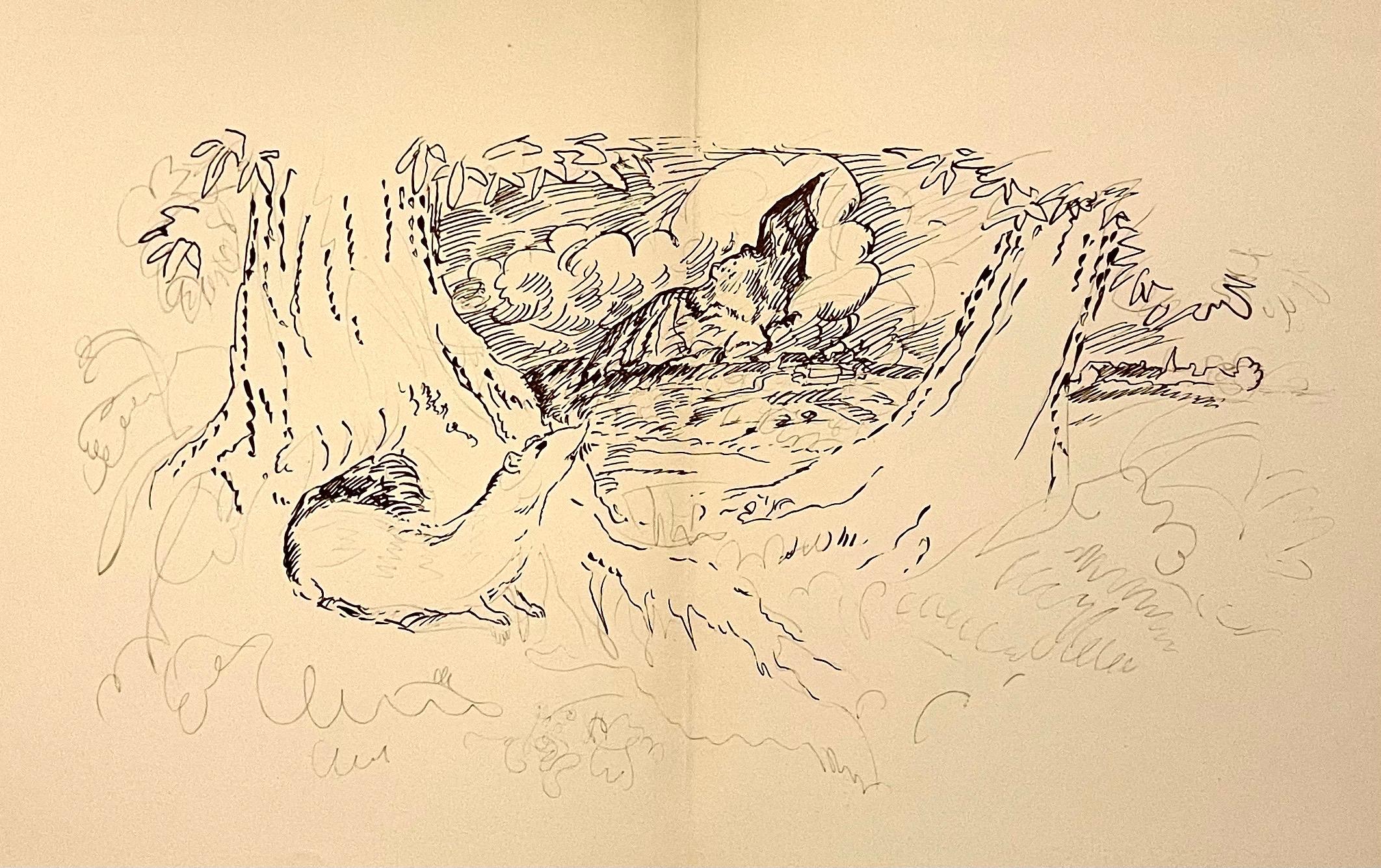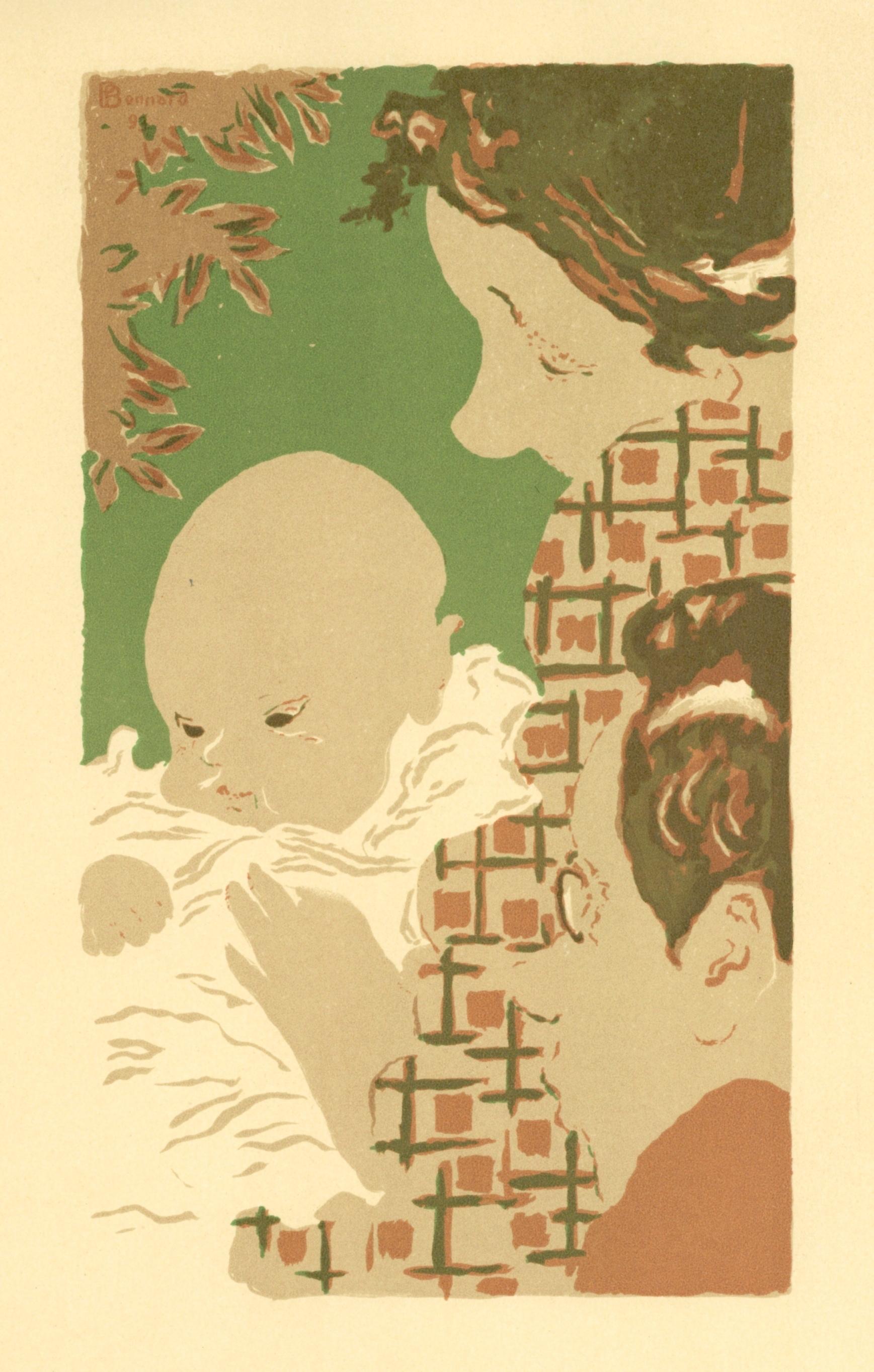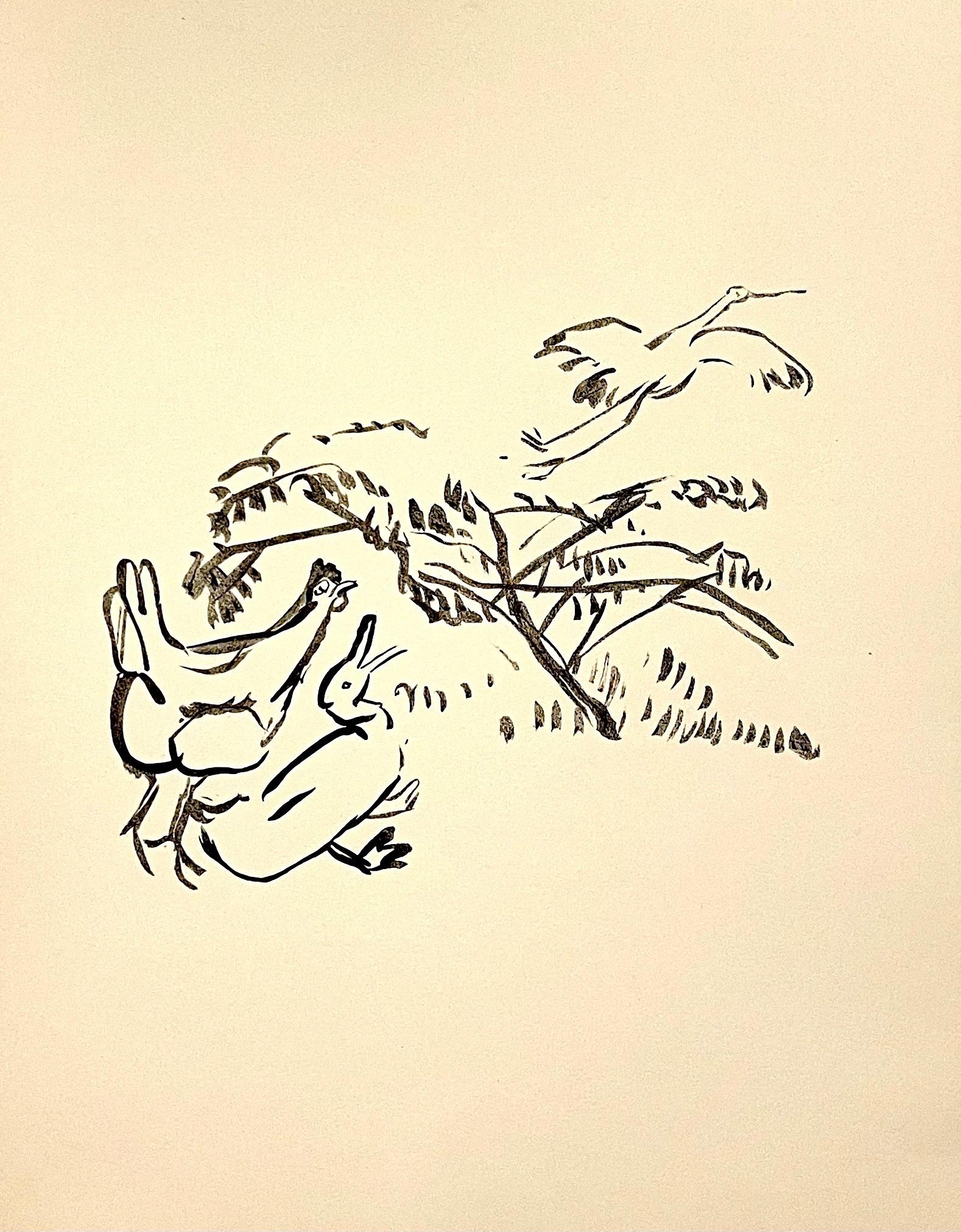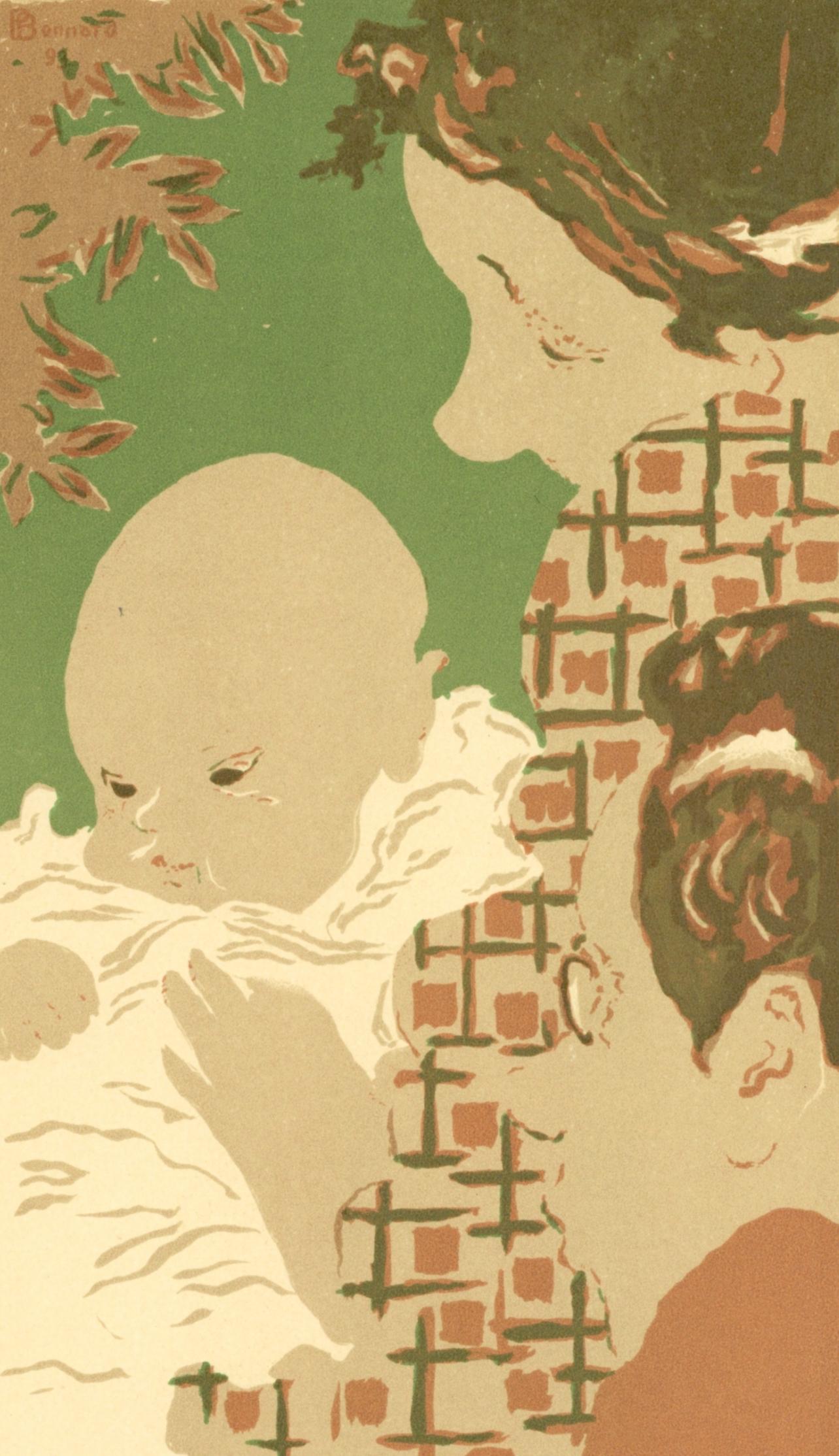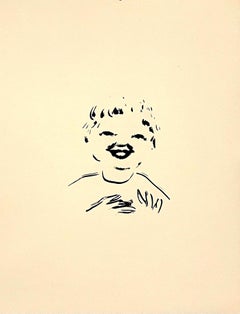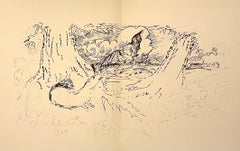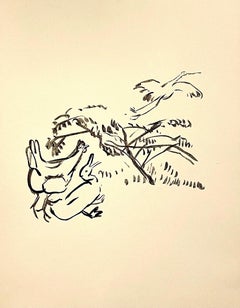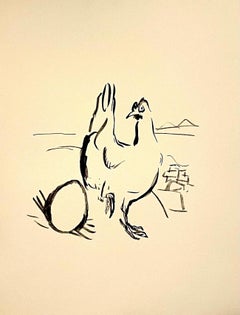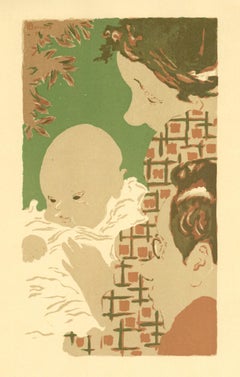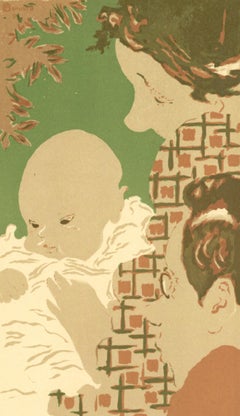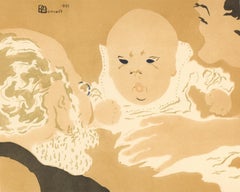Items Similar to Pierre Bonnard Ltd Ed Lithograph Printed at Mourlot Paris 1958 Father and Son
Want more images or videos?
Request additional images or videos from the seller
1 of 9
Pierre Bonnard Ltd Ed Lithograph Printed at Mourlot Paris 1958 Father and Son1958
1958
$650
£500.68
€571.72
CA$927.37
A$1,014.85
CHF 532.24
MX$12,129.59
NOK 6,716.85
SEK 6,266.01
DKK 4,269.72
About the Item
This is from a limited edition portfolio of original lithographs print Fernand Mourlot in Paris in 1958 from work done in collaboration with Bonnard which began in 1928.
This is from the rare first edition, No. VII of 20 unbound sets, specially printed for Hans P. Kraus, with Henry de Montherlant inscription to him signed and dated March 3, 1960
These are not individually hand signed or numbered.
On BFK Rives French velin art paper
Pierre Bonnard (1867 – 1947) was a French painter, illustrator and printmaker, known especially for the stylized decorative qualities of his paintings and his bold use of color. A founding member of the Post-Impressionist group of avant-garde painters Les Nabis, (the Naive artists) his early work was strongly influenced by the work of Paul Gauguin, as well as the prints of Hokusai and other Japanese artists. Bonnard was a leading figure in the transition from Impressionism to Modernism. He painted landscapes, urban scenes, portraits and intimate domestic scenes, where the backgrounds, colors and painting style usually took precedence over the subject.
Pierre Bonnard was born in Fontenay-aux-Roses, Hauts-de-Seine on 3 October 1867. His mother, Élisabeth Metzdorff, was from Alsace. His father, Eugène Bonnard, was from the Dauphiné, and was a senior official in the French Ministry of War. He had a brother, Charles, and a sister, Andrée, who in 1890 married the composer Claude Terrasse.
He received his education in the Lycée Louis-le-Grand and Lycée Charlemagne in Vanves. He showed a talent for drawing and water colors, as well as caricatures. He painted frequently in the gardens of his parent's country home at Grand-Lemps near the Cote Saint-André in the Dauphiné. He also showed a strong interest in literature. He received his baccalaureate in the classics, and, to satisfy his father, between 1886 and 1887 earned his license in law, and began practicing as a lawyer beginning in 1888. While he was studying law, he also attended art classes at the Académie Julian in Paris. At the Académie Julien he met his future friends and fellow artists, Paul Sérusier, Maurice Denis, Gabriel Ibels and Paul Ranson. In 1888 Bonnard was accepted by the École des Beaux-Arts, where he met Édouard Vuillard and Ker Xavier Roussel. He also sold his first commercial work of art, a design for poster for France-Champagne, which helped him convince his family that he could make a living as an artist. He set up his first studio at on rue Lechapelais and began his career as an artist.
From 1893 until her death, Bonnard lived with Marthe de Méligny (1869–1942), and she was the model for many of his paintings, including many nude works. Her birth name was Maria Boursin, but she had changed it before she met Bonnard. They married in 1925. In the years before their marriage, Bonnard had love affairs with two other women, who also served as models for some of his paintings, Renée Monchaty (the partner of the American painter Harry Lachmann) and Lucienne Dupuy de Frenelle, the wife of a doctor; it has been suggested that Bonnard may have been the father of Lucienne's second son. Renée Monchaty committed suicide shortly after Bonnard and de Méligny married.
In 1891 he met Toulouse-Lautrec and in December 1891 showed his work at the annual exhibition of the Société des Artistes Indépendants. In the same year Bonnard also began an association with La Revue Blanche, for which he and Edouard Vuillard designed frontispiece In March 1891, his work was displayed with the work of the other Nabis at the Le Barc de Boutteville. The style of Japanese graphic arts became an important influence on Bonnard. In 1893 a major exposition of works of Utamaro and Hiroshige was held at the Durand-Rouel Gallery, and the Japanese influence, particularly the use of multiple points of view, and the use of bold geometric patterns in clothing, such as checkered blouses, began to appear in his work. Because of his passion for Japanese art, his nickname among the Nabis became Le Nabi le trés japonard. He devoted an increasing amount of attention to decorative art, designing furniture, fabrics, fans and other objects. He continued to design posters for France-Champagne, which gained him an audience outside the art world. In 1892 he began to produce lithographs, and painted two of his early notable works, Le Corsage a carreaux and La Partie de croquet. He also made a series of illustrations for the music books of his brother-in-law, Claude Terrasse. In 1895 he became an early participant of the movement of Art Nouveau, designing a stained glass window, called Maternity, for Tiffany. In 1895 he had his first individual exposition of paintings, posters and lithographs at the Durand-Ruel Gallery. He also illustrated a novel, Marie, by Peter Nansen, published in series by in La Revue Blanche. The following year he participated in a group exposition of Nabis at the Ambroise Vollard Gallery. In 1899, he took part in another major exposition of works of the Nabis.
Throughout the early 20th century, as artistic styles appeared and disappeared with almost dizzying speed, Bonnard kept refining and revising his personal style, and exploring new subjects and media, but keeping the distinct characteristics of his work. Working in his studio at 65 rue de Douai in Paris, he presented paintings at the Salon des Independents in 1900, and also made 109 lithographs for Parallèment, a book of poems by Verlaine. He also took part in an exhibition with the other Nabis at the Bernheim Jeune gallery. He presented nine paintings at the Salon des Independents in 1901. In 1905 he produced a series of nudes and of portraits, and in 1906 had a personal exposition at the Bernheim-Jeune Gallery. In 1908 he illustrated a book of poetry by Octave Mirbeau, and made his first long stay in the South of France, at the home of the painter Manguin in Saint-Tropez. in 1909, and in 1911 began a series of decorative panels, called Méditerranée, for the Russian art patron Ivan Morozov.
During the years of the First World War, Bonnard concentrated on nudes and portraits, and in 1916 completed a series of large compositions, including La Pastorale, Méditterranée, La Paradis Terreste and Paysage de Ville. His reputation in the French art establishment was secure; in 1918 he was selected, along with Renoir, as an honorary President of the Association of Young French Artists. In the 1920s, he produced illustrations for a book by Andre Gide (1924) and another by Claude Anet (1923). He showed works at the Autumn Salon in 1923, and in 1924 was honored with a retrospective of sixty-eight of his works at the Galerie Druet. In 1925 he purchased a villa in Cannes.
In 1938 his works and Vuillard were featured at an exposition at the Art Institute of Chicago. The outbreak of World War II in September 1939, forced Bonnard to depart Paris for the south of France, where he remained until the end of the war. Under the German occupation, he refused to paint an official portrait of the French collaborationist leader, Marechal Petain, but accepted a commission to paint a religious painting of Saint Francis de Sales, with the face of his friend Vuillard, who had died two years earlier. He finished his last painting, The Almond Tree in Blossom, a week before his death in his cottage on La Route de Serra Capoue near Le Cannet, on the French Riviera, in 1947. The Museum of Modern Art in New York City organized a posthumous retrospective of Bonnard's work in 1948, although originally it was meant to be a celebration of the artist's 80th birthday.
Bonnard particularly used the model of Japanese art in a series of paintings of four women in gardens, painted in 1890–91, and now in the Museé d'Orsay. He used the format called kakemono, with a narrow vertical canvas. The female forms are reduced to silhouettes and flattened, and there is no depth to the picture. The faces of the women are hardly shown; the patterns of the costumes and the foliage behind them dominate the paintings. The decoration of the costumes and the background practically obscure the faces. He often pictured women in checkered blouses, a design he said he had discovered in Chinese prints. At the beginning of his career, Bonnard designed very popular posters for a French champagne firm, which won him wide public attention. He later produced many sets of engravings illustrating the works of the avant-garde authors of his time.
Bonnard is known for his intense use of color, especially via areas built with small brush marks and close values. His often complex compositions—typically of sunlit interiors and gardens populated with friends and family members—are both narrative and autobiographical. While Pablo Picasso famously panned his work, Henri Matisse wrote "I maintain that Bonnard is a great artist for our time and, naturally, for posterity." Balthus, who did not especially esteem Matisse, nonetheless agreed with this high assessment of Bonnard. And in the USA, Bonnard was much admired by, among others, Milton Avery, Fairfield Porter and Nell Blaine. Bonnard came to exert a considerable influence on American painting over the last half-century. Even Mark Rothko must also be numbered among the American painters crucially influenced by Bonnard.Two major exhibitions of Bonnard's work took place in 1998: February through May at the Tate Gallery in London, and from June through October at the Museum of Modern Art in New York City. In 2009 the exhibition "Pierre Bonnard: The Late Interiors" was shown at the Metropolitan Museum of Art.
- Creation Year:1958
- Dimensions:Height: 13 in (33.02 cm)Width: 10 in (25.4 cm)
- Medium:
- Movement & Style:
- After:Pierre Bonnard (1867-1947, French)
- Period:
- Condition:
- Gallery Location:Surfside, FL
- Reference Number:1stDibs: LU38215857932
About the Seller
4.9
Platinum Seller
Premium sellers with a 4.7+ rating and 24-hour response times
Established in 1995
1stDibs seller since 2014
1,839 sales on 1stDibs
Typical response time: 1 hour
- ShippingRetrieving quote...Shipping from: Surfside, FL
- Return Policy
More From This Seller
View AllPierre Bonnard ltd edition Lithograph Printed at Mourlot Paris 1958 Young Boy
By Pierre Bonnard
Located in Surfside, FL
This is from a limited edition portfolio of original lithographs print Fernand Mourlot in Paris in 1958 from work done in collaboration with Bonnard which began in 1928.
This is f...
Category
20th Century Post-Impressionist Animal Prints
Materials
Lithograph
Pierre Bonnard ltd edition Lithograph Printed at Mourlot Paris 1958 Double Page
By Pierre Bonnard
Located in Surfside, FL
This is from a limited edition portfolio of original lithographs print Fernand Mourlot in Paris in 1958 from work done in collaboration with Bonnard which began in 1928.
This is f...
Category
20th Century Post-Impressionist Animal Prints
Materials
Lithograph
Pierre Bonnard Ltd Ed Lithograph Printed at Mourlot Paris 1958 Chickens and Swan
By Pierre Bonnard
Located in Surfside, FL
This is from a limited edition portfolio of original lithographs print Fernand Mourlot in Paris in 1958 from work done in collaboration with Bonnard which began in 1928.
This is f...
Category
20th Century Post-Impressionist More Prints
Materials
Lithograph
Pierre Bonnard ltd edition Lithograph Printed at Mourlot Paris 1958 Chicken, Egg
By Pierre Bonnard
Located in Surfside, FL
This is from a limited edition portfolio of original lithographs print Fernand Mourlot in Paris in 1958 from work done in collaboration with Bonnard which began in 1928.
This is f...
Category
20th Century Post-Impressionist Animal Prints
Materials
Lithograph
Pierre Bonnard Lithograph Printed at Mourlot Paris 1958 Mosque Minaret, Swan
By Pierre Bonnard
Located in Surfside, FL
This is from a limited edition portfolio of original lithographs print Fernand Mourlot in Paris in 1958 from work done in collaboration with Bonnard which began in 1928.
A mosque ...
Category
20th Century Post-Impressionist Animal Prints
Materials
Lithograph
Pierre Bonnard Lithograph Printed at Mourlot Paris 1958 Mosque Minaret, Village
By Pierre Bonnard
Located in Surfside, FL
This is from a limited edition portfolio of original lithographs print Fernand Mourlot in Paris in 1958 from work done in collaboration with Bonnard which began in 1928.
A walled ...
Category
20th Century Post-Impressionist More Prints
Materials
Lithograph
You May Also Like
Family - Original Lithograph by Pierre Bonnard - 1930
By Pierre Bonnard
Located in Roma, IT
Edition of 340 prints. Monogram of the artist on plate. This lithograph is one of the illustrations that the French artist Pierre Bonnard realized for the collection "The Life of Sai...
Category
1930s Post-Impressionist Figurative Prints
Materials
Lithograph
"Scene de famille" lithograph
By (after) Pierre Bonnard
Located in Henderson, NV
Medium: multi-stone color lithograph (after the original Bonnard lithograph). Printed in 1952 on Renage paper at the Mourlot atelier in faithful recreation of the original. According...
Category
1950s Fauvist Prints and Multiples
Materials
Lithograph
Bonnard, Scéne de famille II, Bonnard Lithographe (after)
By Pierre Bonnard
Located in Fairfield, CT
Medium: Lithograph on grand vélin Renage filigrané paper.
Year: 1952
Paper Size: 12.5 x 9.5 inches; image size: 10.24 x 5.91 inches
Inscription: Unsigned and unnumbered, as issued
No...
Category
1950s Post-Impressionist Figurative Prints
Materials
Lithograph
$716 Sale Price
20% Off
Bonnard, Scéne de famille I, Bonnard Lithographe (after)
By Pierre Bonnard
Located in Fairfield, CT
Medium: Lithograph on grand vélin Renage filigrané paper.
Year: 1952
Paper Size: 9.5 x 12.5 inches; image size: 7.08 x 8.66 inches
Inscription: Signed in the plate and unnumbered, as...
Category
1950s Post-Impressionist Figurative Prints
Materials
Lithograph
$716 Sale Price
20% Off
"Scene de famille" lithograph
By (after) Pierre Bonnard
Located in Henderson, NV
Medium: multi-stone color lithograph (after the original Bonnard lithograph). Printed in 1952 on Renage paper at the Mourlot atelier in faithful recreation of the original. According...
Category
1950s Fauvist Prints and Multiples
Materials
Lithograph
lithograph
By (after) Pierre Bonnard
Located in Henderson, NV
Medium: lithograph (after the drawing). This impression in violet ink was printed in France in 1944 for the rare "Correspondances" portfolio, published by Teriade in a limited editio...
Category
1940s Prints and Multiples
Materials
Lithograph
More Ways To Browse
Father Son
Garden China Made In Japan
Art Nouveau Stained Glass
Saint Louis France Champagne Glass
French Champagne Posters
Vintage American Football Posters
Vintage Beetle Print
Vintage Campari Prints
Vintage Farm Tractors
Vintage Football Prints
Vintage Hindu Posters
Vintage Ski Poster Sweden
Vintage Surf Art
Vintage Wimbledon Posters
White Star Line Poster
Wwi Original Vintage Posters
300sl Coupe
Aer Lingus
